September 3, 2014
DIY
No Comments
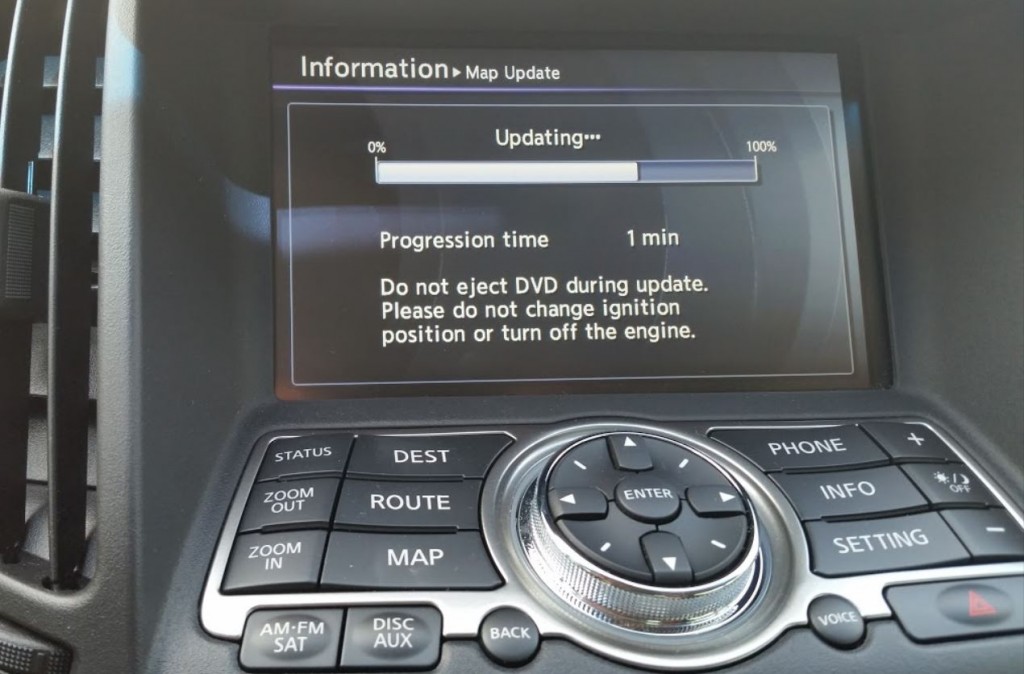 DenLorsTools.com Summary: I recently did the NAV update on my wife’s 2013 Infiniti G37 Coupe. The update came with 5 DVD’s and the update process is done by following the directions and putting the DVD’s in the CD player one by one.Â
DenLorsTools.com Summary: I recently did the NAV update on my wife’s 2013 Infiniti G37 Coupe. The update came with 5 DVD’s and the update process is done by following the directions and putting the DVD’s in the CD player one by one.Â
Read the rest…
March 9, 2012
DIY, How To Auto Repair
No Comments
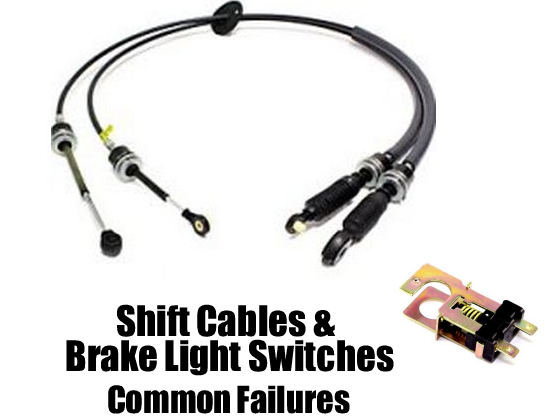
© DenLorsTools.com Summary: Various causes of car or trucks not shifting out of park. No matter which manufacturer Ford, Chevrolet, Chrysler etc., some causes of this problem may be the same. The shifter itself, the shift cable that goes from the shift selector to the transmission, the brake light switch, the shift inter-lock are some of the potential problems. This article is not about transmission failure or the fluid being too low for the car to move.
Read the rest…
March 12, 2011
Brake Bleeding, DIY, Oil Change
No Comments
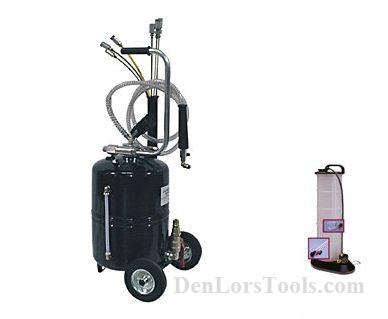
© DenLorsTools.com Summary: Suggestions on the many uses of fluid evacuators, products also available for sale. Fluid evacuators are a huge time saver and such a convenient tool when it comes to pulling fluid out of a car. DenLors Tools has a variety of fluid evacuators/suction pumps for sale at great prices. The selection offered makes it easy to find the right one.
Read the rest…
January 1, 2011
Consumer, DIY, How To Auto Repair
2 Comments
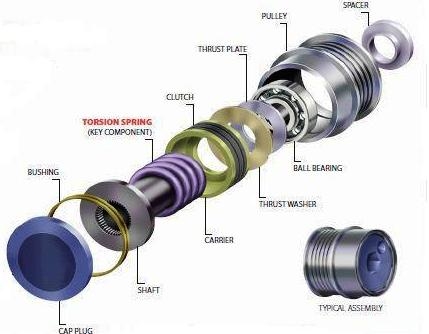
OAD stands for Overrunning Alternator Decoupler – Image Courtesy of the Gates Corp.
© DenLorsTools.com Summary: DenLors auto repair blog written by an ASE master tech. Helping to make sense of the clutch type alternator pulleys used on many cars today. Knowing how decoupler pulleys are designed and how they’re suppose to work is the first step in properly diagnosing problems. Many alternators are replaced needlessly due incorrectly diagnosed problems related to this type of pulley.
Read the rest…
January 1, 2011
Alternator, DIY, Dodge Caravan, Drivetrain and Noises
57 Comments
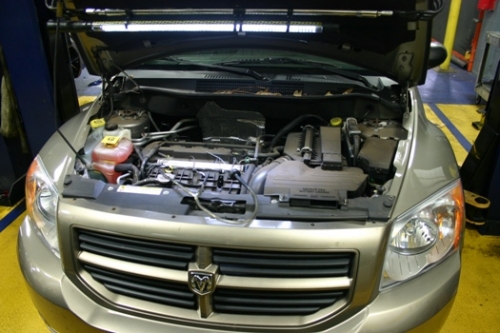
© DenLorsTools.com Summary: DenLors car Auto repair article covering a common problem with Dodge Caliber and Caravan alternators causing a loud noise – may sound similar to a diesel engine. A video with sound is in this article demonstrating the noise that could be heard. Premature alternator failure or de-coupler clutch pulley gone bad? Read on to learn about the possibility of a less expensive solution when the knocking noise is coming from the alternator area.
Read the rest…
December 24, 2010
Check Engine Light, DIY, EVAP, How To Auto Repair
38 Comments
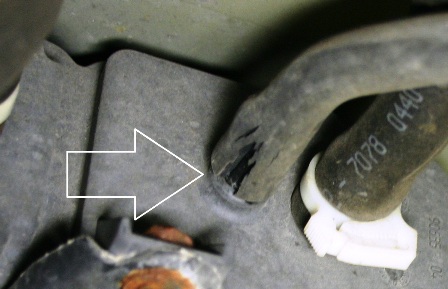
© DenLorsTools.com Summary: DenLors auto repair blog covering a common EVAP (Evaporative Emission Control) system problem. EVAP charcoal canisters can contaminate the system causing flow and vent issues. Sometimes problems with venting can make it almost impossible to fill up at the gas pump. A very frustrating ordeal at the pump is to have the pump shut-off while putting gas in BEFORE the tank is full. Some vehicles even have the fuel splash back out due to improper vent tube operation. This car repair article points out several things to look for when charcoal from an EVAP canister has broken loose and has entered the EVAP lines causing a blockage.
Read the rest…
December 20, 2010
DIY, Engine Replacement, How To Auto Repair, Mechanics Tools
No Comments

© DenLorsTools.com Summary: Advice on changing an engine by a master tech. Changing a motor in a car is a lot of work. With some basic planning and research prior to starting the job, an engine change out will go a lot smoother.
Are You Experienced?
A motor swap is a very involved job and in most cases shouldn’t be attempted by a DIY’er. The best case scenario for someone changing an engine is for the person to first have a lot of experience doing a lot of smaller jobs. For instance if someone already has removed intakes plenty of times, they can pull from that experience when having to change the intake on the replacement engine during the motor swap. If the person has already changed alternators, water pumps, AC compressors, valve covers, timing covers, CV 1/2 shafts, motor mounts and so forth… well you get the idea. Changing a motor in a vehicle is a combination of many small jobs all put together. For a person to feel confident in taking on a large job like replacing an engine, they have to have some experience accomplishing the small jobs that play a large part in the make-up of a motor swap.
Planning Stages
Research is a key factor in successfully changing a motor out. Plan out the job by thinking about the best approach. Refer to an on-line service repair manual to see how the job is recommended. Many motors can be removed from the topside of the automobile. Some cars, particularly with front wheels drives should be removed from underneath by dropping the entire engine cradle or sub-frame. If the motor needs to be lowered from underneath the car then a vehicle lift will be necessary. If the correct equipment is not on hand for the job, you will be fighting an uphill battle. Not to say jobs “at the house” can’t be accomplished, but things are much more difficult without the convenience of all the right tools and equipment. Determine if you have the equipment and tools needed before starting the job.
Misconceptions
Some people think that ALL rear wheel drive cars are easier to do motor swaps in compared to front wheel drives. It all depends on the vehicle. Some rear wheel drive cars have harder engines to change. It all depends on access to all the bolts, positioning of the cab and the motor mount set-up. I have changed a FWD motor before by only removing ONE motor mount! It was a Ford Contour or Mercury Mystique. The mounts were all on the transmission except for the ONE front engine mount. That was a very easy front wheel drive engine to change.
Lifting Points
Before starting on the big job, figure out where the lifting points will be. Many cars have plastic intakes that should NOT be lifted on or stressed by the force of an engine lifting chain. The intake may need to be removed prior to attaching the engine chain or load leveler. Some cars will have lifting brackets already in place on the motor. Sometimes brackets can be purchased for specific models. Other times substantial bolts can be used in the engine block or sometimes the exhaust manifold studs when attaching the chain. It’s important to consider the over-all weight and if the heads are aluminum or not when deciding where to hook up the engine chain. I’ve used nylon straps before to attach to motors for pulling them. Nylon straps are much more forgiving than steel chains when up against plastic intakes and other components. Load levelers can be helpful in tilting the motor for lining it up with the transmission. The drawback to using a load leveler is that they are bulky and sometimes in the way. With that being said they really do save your back, since you can adjust the tilt with an easy adjustment instead of physically having to twist and tilt the motor with brute force!
Extra Access and Light
Remove the hood to allow for more light on the subject. Also it helps to prevent damage to the hood when going in and out with the engine crane. The hood should be placed in an out of the way area to help prevent it from being damage while the motor swap is being done. The hood sliding off the roof of the car can cause a lot damaged very quickly! By having the hood off, there will be a lot more light on the engine. Also have a good drop light and flashlight to make things go easier. One of the hardest things to do is to work an a car in a dimly lit area… frustrating and more time consuming.
Related Mechanics Tools & Auto Repair Articles
3.6 Engine Bracket
Dodge Caravan Engine Change 2001-2007 Generation 4
Auto Tools
December 18, 2010
Check Engine Light, Chevrolet, DIY
No Comments

The engine may intermittently jump, setting a DTC P2138 fault code.
© DenLorsTools.com Summary: In older cars accelerator pedals were linked to the carburetor by cable, my how times are changing! Now, many automobiles have the “fly by wire” set up. Instead of cable from the gas pedal, most new cars use computers and various components to make the car GO. This DenLors car repair article covers common fault codes like the P2138 which have to do with the electronic gas pedal used in many cars today. Read on to find out how the auto industry has mimicked the aircraft industry…
Read the rest…
December 4, 2010
Consumer, DIY, How To Auto Repair
77 Comments

The standard heater core above is copper – some cores are aluminum .
© DenLorsTools.com Summary: This is part two of our exclusive car repair blog helping to troubleshoot car heater problems when they blow cold. The original article has been very popular in the colder months of the year. This repair article picks up where the first article leaves off. If you have not read the first part of the Car Heater Blows Cold article, I recommend reading it first.
Read the rest…
November 27, 2010
brakes, DIY, How To Auto Repair, noises
No Comments

Disc brake service is one of the most commonly performed DIY jobs.
© DenLorsTools.com Summary: Disc brake service is one of the most common jobs done by the weekend mechanic. Find out how to tell when brake pads need to be replaced, it’s simple after you know what to look for. Most people are surprised to find out that brake noise is one of the most common causes of comebacks that professional car repair shops deal with. Learn in this auto repair blog which types of cars are more prone to having squeaky brakes than others. Find out what some car owners do that causes brake squeak that they are not even aware of! Also learn what the professionals do to reduce brake noise to help prevent customers from having to bring their cars back for warranty repair. Read the rest…
 DenLorsTools.com Summary: I recently did the NAV update on my wife’s 2013 Infiniti G37 Coupe. The update came with 5 DVD’s and the update process is done by following the directions and putting the DVD’s in the CD player one by one.Â
DenLorsTools.com Summary: I recently did the NAV update on my wife’s 2013 Infiniti G37 Coupe. The update came with 5 DVD’s and the update process is done by following the directions and putting the DVD’s in the CD player one by one. 







